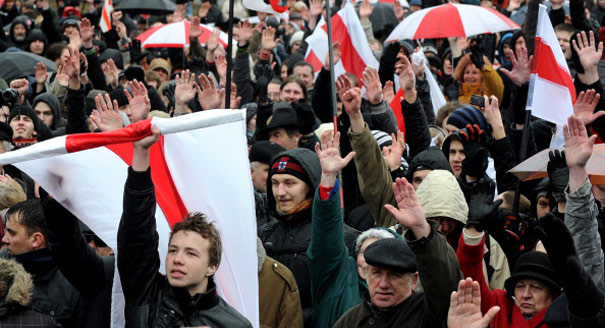The European Endowment for Democracy (EED) began work in September 2013 and has been in operation for two years. In this short amount of time, it has proved itself a valuable addition to the existing range of international democracy support organizations and initiatives.
The endowment has been innovative, bold, and determined in the types of projects it has supported. Yet as it moves on from being a new organization to a consolidated player in democracy support, the EED will face stiff challenges and will need to recalibrate its activities.
This means the EED has worked in countries that are reforming and in those that are not. It has both seized new opportunities for reform and sought to defend basic liberties in those states where political repression is getting worse.
In really challenging places like Azerbaijan, Syria, and Egypt, the EED is increasingly alone among European organizations in staying the course and trying to support democratic activists. The endowment’s legal assistance to persecuted activists in various repressive countries is a notable example of such defensive support.
The EED has recently been granted permission by its board to move beyond the EU’s immediate neighborhood to support initiatives in the neighbors of the neighbors. The endowment may now spend up to 15 percent of its annual grants budget on this wider circle of countries. This means it is set to consider bids from, for instance, Iran, Bahrain, and Central Asia.
Most sensitively, this move brings Russia within the organization’s geographical mandate. The EED has embarked on an initiative to look at how it can best support independent Russian-language media.
While the EED still does not have a huge amount of money, it should be able to continue functioning with a budget of €7–8 million ($8–9 million) a year. The endowment has secured small contributions from some member states that were originally unsupportive, like Germany and Spain. Disappointingly, neither the UK nor France has offered any backing. A wider funding base will be needed, beyond the initial Polish, Swedish, and European Commission start-up contributions.
The #EED has been innovative and determined in the projects it has supported.Tweet This
The EED has gained significant independence from member states in its funding decisions—perhaps to a greater degree than most expected when it started work in 2013. It is more genuinely demand-driven than other donors. While all donors insist their funding is now demand-driven, the EED has moved further in this direction.
The endowment does not have thematic priorities around which applicants must frame their proposals. It makes funding decisions quickly and on a continuous basis; it does not rely on set calls for proposals spread over long intervals. EED application forms are short and simple, and can be submitted in Arabic, English, French, or Russian. The EED does not have contact with governments, positioning itself as a unique defender of independent civil society.
The endowment’s motto is “Supporting the unsupported.” This means a focus on funding civil society organizations that slip through the gaps in other sources of funding. The EED often provides bridging funds to prevent these organizations from closing until they can obtain longer-term support from mainstream EU budgets. This happened, for example, with several media outlets during the antigovernment Maidan revolts in Ukraine in 2014.
While often funding well-known civil society figures, the EED has tried to support some new types of activism—including sensitive political movements. Examples include: funding artists to get young people engaged in politics through music in Morocco; helping Ukrainian civil society activists find ways of engaging with mainstream politics; and fomenting civic participation in Tunisia’s rural communities, where professionalized nongovernmental organizations are absent. A project in Syria has supported training for judges and lawyers on democratic standards, as a complement to sharia law. A third of EED grantees are unregistered.
All this has given the EED an impressively original and vanguard profile in its first two years. Facing many skeptics among member states, EU institutions, and other democracy foundations, the endowment has proved its added value. Member states’ distinctly underwhelming commitment to democracy and human rights in recent years reinforces the EED’s worth.
The #EED needs to find ways of locating genuinely new democracy activists.Tweet This
Inevitably, there is room for improvement. The EED still needs to find ways of locating genuinely new democracy activists. It must devise tactics capable of neutering regimes’ attacks on its projects. It needs to develop techniques for monitoring the impact of its civil society support beyond the short term. And it still has to draw together its assortment of individual projects into a more comprehensive model of political change.
Expectations of what the EED can achieve are now extremely high. Having succeeded in carving out a niche role for itself, the endowment will need resources, political backing, conviction, and constant renovation to advance in the next phase of its evolution.
Richard Youngs’s new book The Puzzle of Non-Western Democracy is now available.









